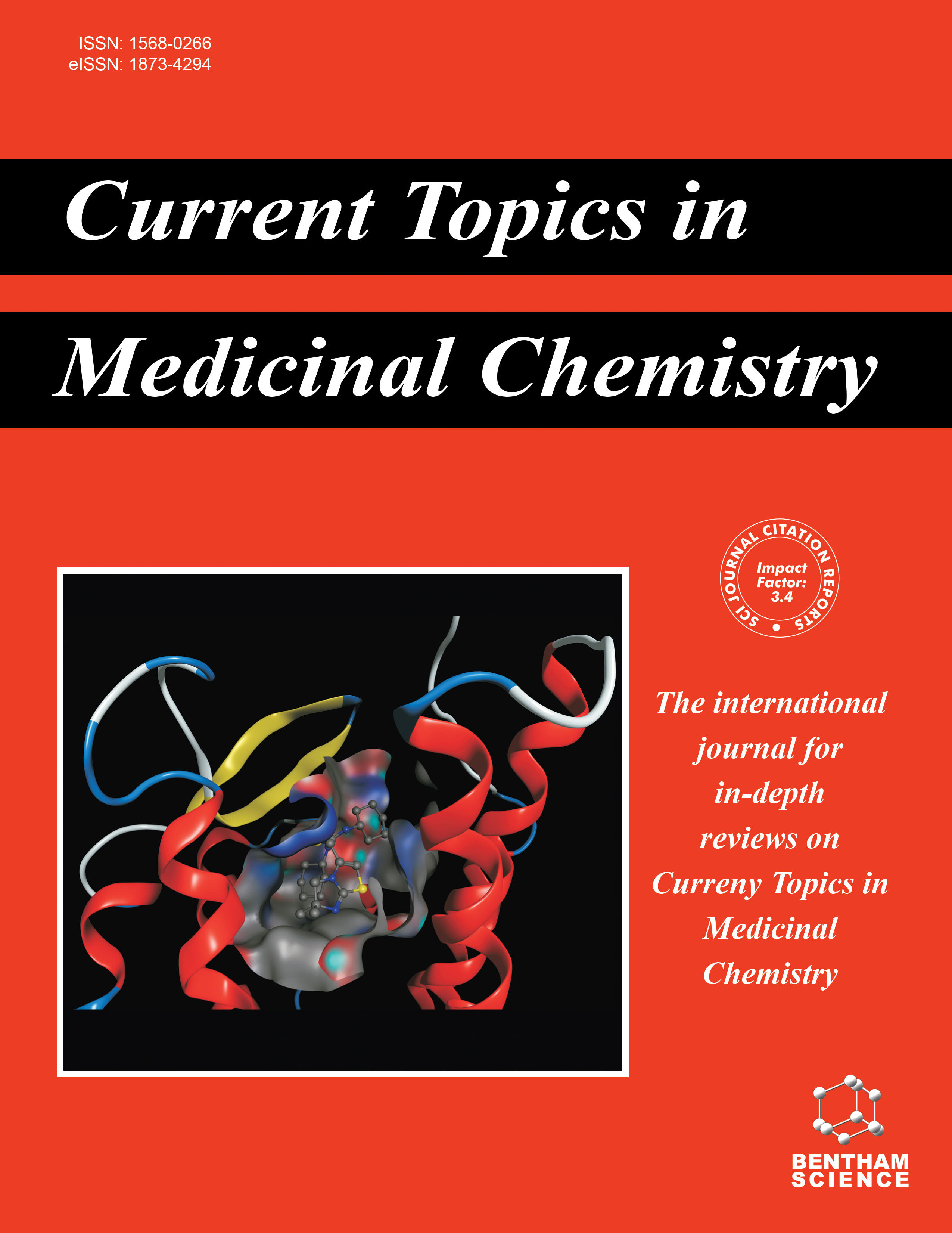- Home
- A-Z Publications
- Current Topics in Medicinal Chemistry
- Previous Issues
- Volume 23, Issue 20, 2023
Current Topics in Medicinal Chemistry - Volume 23, Issue 20, 2023
Volume 23, Issue 20, 2023
-
-
AmpC Inhibition: An Explicit Approach against Multi-Drug Resistance (MDR)
More LessAuthors: Manish Kaushik, Aditi Kaushik, Akash Jain, Jasmine Chaudhary and Vrinda GuptaMulti-drug resistance and its transmission is a ubiquitous health issue worldwide. The beta-lactamase AmpC resistance is a major concern among all health settings like hospitals and child care centers, etc. The clinical pipeline of the new antibiotics remains dry due to the production of AmpC beta-lactamases by the bacteria to develop resistance against antibiotics. According to the global antimicrobial resistance and use surve Read More
-
-
-
Various Effects of the GABAergic System on Cancer: The Conditions and Specificities of its use in the Treatment of Some Cancers
More LessAuthors: Hossein T. Dehkordi, Sorayya Ghasemi and Masoumeh Eliyasi DashtakiGABA is an essential neurotransmitter in tissues other than the brain and has different functions. Cancer displays dysfunctional GABAergic system roles, comprising GAD, GABA, and GABA receptors. Both tumor-suppressing and carcinogenic characteristics of the GABAergic system have been reported in several malignancies. In the development of cancer cells, it plays oncogenesis- related roles. However, in some tumors, suc Read More
-
-
-
Antiproliferative Activity and Mechanisms of Action of Plant-derived Flavonoids on Breast Cancer
More LessBreast cancer is one of the main global diseases with a high mortality rate that mainly affects the female population. Despite the important advances that have been made concerning the treatments for this disease, research on less invasive therapies that generate fewer side effects for patients continues to develop. Consequently, researchers have turned their attention to using natural compounds (such as flavonoids) in Read More
-
-
-
Advances in Medicinal Chemistry of Estrogen-related Receptor Alpha (ERRα) Inverse Agonists
More LessAuthors: Haibin Zhang, Yongli Du, Yong Zheng, Huiting Lv, Zhijia Yan, Ning Dong, Yaling Zhu and Jingkang ShenEstrogen-related receptor alpha (ERRα), a member of the nuclear receptor superfamily, is strongly expressed in breast cancer cells. Its overexpression is associated with poor prognosis in triple- negative Breast Cancer (TNBC). ERRα expression could be inhibited by the downregulation of upstream oncogenic growth factors mTOR, HER2, and PI3K. Low expression of ERRα could suppress the migration an Read More
-
-
-
A Review of Phytochemical and Pharmacological Properties of Alpinia malaccensis (Burm. F.) Roscoe. (Zingiberaceae)
More LessAlpinia malaccensis, commonly known as “Malacca ginger” and “Rankihiriya,” is an important medicinal plant of Zingiberaceae. It is native to Indonesia and Malaysia and widely distributed in countries including Northeast India, China, Peninsular Malaysia and Java. Due to vide pharmacological values, it is necessary to recognize this species for its significance of pharmacological importance. This article provides Read More
-
-
-
Engineered Biosynthesis through the Adenylation Domains from Nonribosomal Peptide Synthetases
More LessAuthors: Zhenhua Lu, Xiao-Huan Liu, Xinsong Yuan, Fei Liu and Tao WangNonribosomal peptide synthetases, consisted of multiple catalytic domains, are involved in the biosynthesis of an important family of bioactive natural products in a coordinated manner. Among the functional domains, adenylation domains are specifically responsible for recognizing carboxylic acid building blocks and synthesizing aminoacyl adenylates. Given their critical roles in the biosynthesis of the growing peptid Read More
-
-
-
Recent Advances in Computer-aided Virtual Screening and Docking Optimization for Aptamer
More LessAuthors: Yijie Liu, Jie Yang, Meilun Chen, Xiaoling Lu, Zheng Wei, Chunhua Tang and Peng YuAptamers, as artificially synthesized short nucleotide sequences, have been widely used in protein analysis, gene engineering, and molecular diagnostics. Currently, the screening process of aptamers still relies on the traditional SELEX process, which is cumbersome and complex. Moreover, the success rate of aptamer screening through the SELEX process is not high, which has become a major challenge. In recen Read More
-
Volumes & issues
-
Volume 25 (2025)
-
Volume 24 (2024)
-
Volume 23 (2023)
-
Volume 22 (2022)
-
Volume 21 (2021)
-
Volume 20 (2020)
-
Volume 19 (2019)
-
Volume 18 (2018)
-
Volume 17 (2017)
-
Volume 16 (2016)
-
Volume 15 (2015)
-
Volume 14 (2014)
-
Volume 13 (2013)
-
Volume 12 (2012)
-
Volume 11 (2011)
-
Volume 10 (2010)
-
Volume 9 (2009)
-
Volume 8 (2008)
-
Volume 7 (2007)
-
Volume 6 (2006)
-
Volume 5 (2005)
-
Volume 4 (2004)
-
Volume 3 (2003)
-
Volume 2 (2002)
-
Volume 1 (2001)
Most Read This Month
Article
content/journals/ctmc
Journal
10
5
false
en


